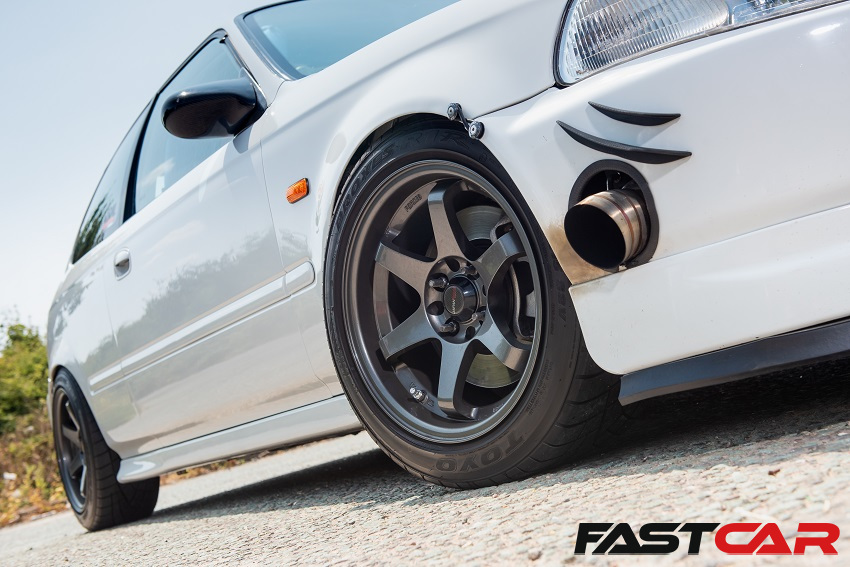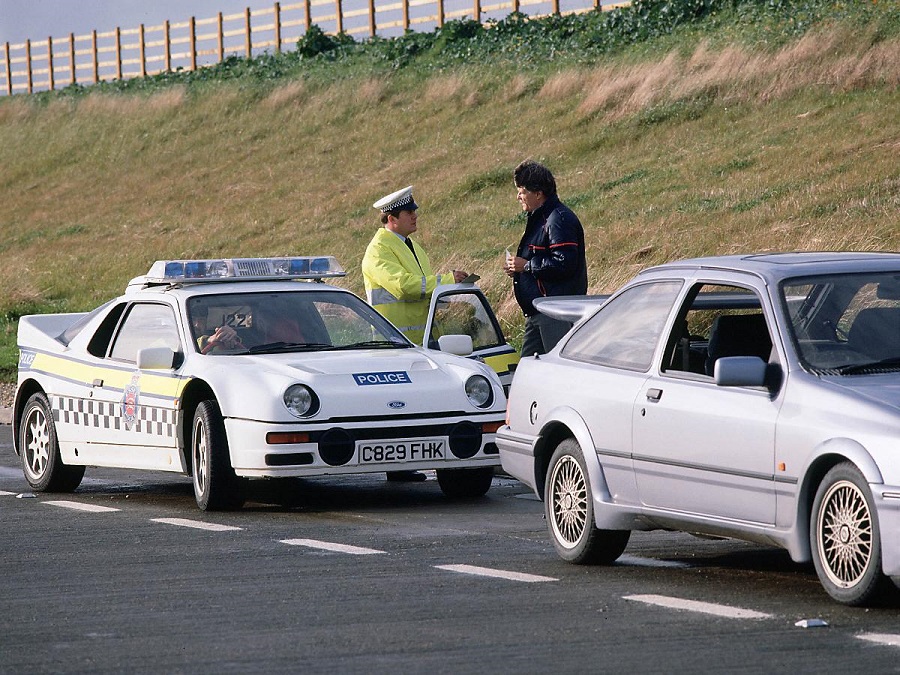The subject that’s spawned a thousand rumours, we look at the legality of car exhaust placement. Here are all the myths, dispelled.
No matter who you speak to, be it a modified car enthusiast, policeman, or even a mechanic or MOT tester, you will get countless and often very confidently said opinions about what’s legal and what is not regarding where your exhaust is allowed to exit on your car. Well unfortunately most of these replies are exactly what we said – opinions, they are not fact. And therefore you should take them with more than a little scepticism.
Because of this, this feature intends to show you the facts and reality of the subject. So, let’s take a look at what truly is road legal in the UK when it comes to car exhaust placement.
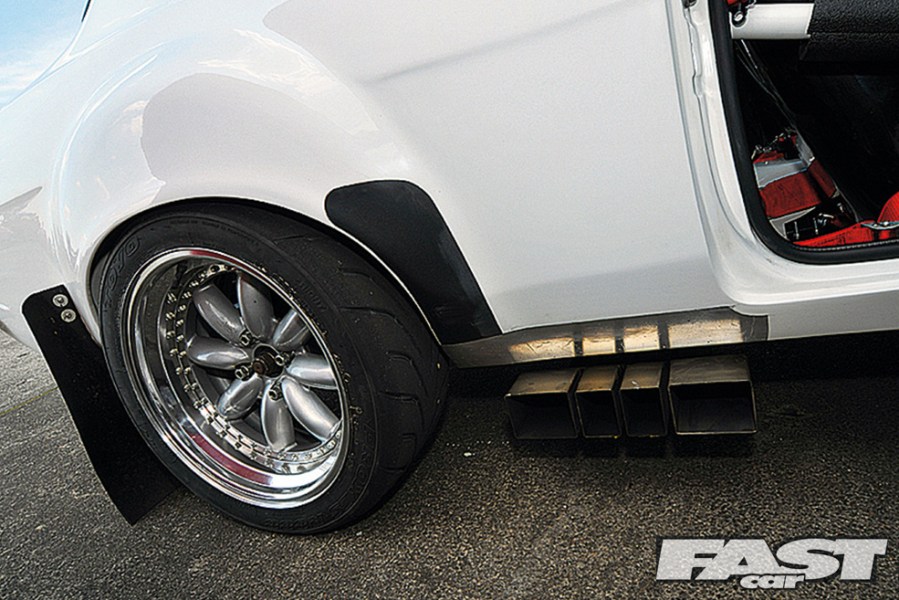
What do people think and say?
People have all kinds of ideas and opinions about the legality of various exhaust positions, with the most common comment being that the exhaust has to exit out the back bumper or behind the rear wheels. But that’s simply not true. While some motorsport regulations state this, for road legality, even on standard production vehicles, that is not the case.
Side exits, front bumper exits, roof exits, wing exits – anything you like, the actual tailpipe exit position is completely free for you to choose. In fact, many production vehicles have exhausts that exit in unusual places due to the shape or use of the vehicle. And of course, that’s completely legal.
There are only really two issues with exhaust exit position that you need to consider: exhaust volume and emissions. Due to space and packaging constraints, certain exhaust exit positions could mean there isn’t the room for the silencers and emissions equipment needed to keep the exhaust legal.
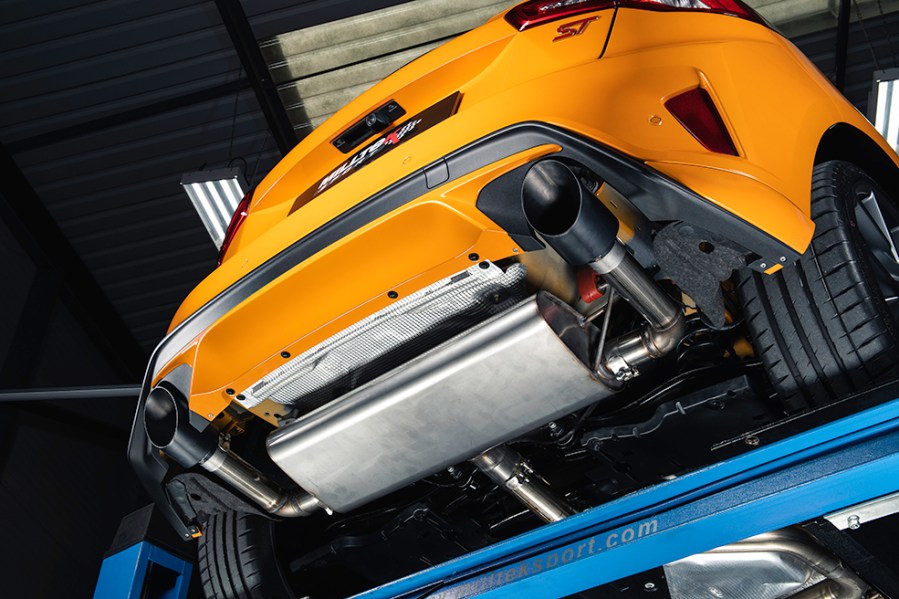
So what do the MOT guidelines say about car exhaust placement?
While some may be surprised considering the tales that many like to tell, MOT rules don’t specifically state any particular exhaust position at all. To be honest, that’s relatively obvious if you think about it, considering the fact that commercial vehicles regularly have exhausts pointing out the side, out vertically, or even mounted at the front of the cab on some specialist vehicles. However, this does not give you free reign on your exhaust, as the regulations still limit things somewhat.
The main one is “Exhaust noise from the vehicle must not be unreasonably above the noise level you’d expect from a similar vehicle with a standard silencer in average condition.” Which means bonnet or front wing exit exhausts are likely to fail an MOT simply as you don’t have room for any real amount of silencing. Beyond that, the position can be where you want as long as it’s secure, doesn’t leak, meets the emissions regulations for the year of car, and isn’t considered a sharp object that could be dangerous to others.
Of course, the “Not unreasonably above” guideline is incredibly vague, so there’s no set noise limit to hit. You just need to hope the tester in question isn’t in an especially bad mood. Overall, it’s the simple fact that the less obnoxious you make it, the less likely they will fail it after deciding it’s too loud.
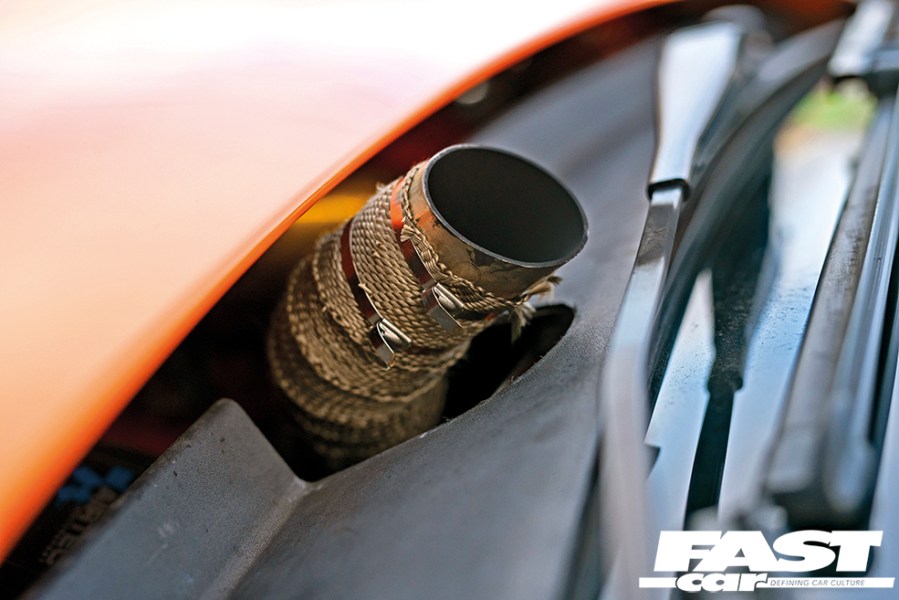
Screamer pipe exiting beneath the windscreen
What about screamer pipes?
Technically, as long as they are working correctly, a separate screamer pipe from an external wastegate is not an MOT issue. This is because at no point during testing should they reach a point when the wastegate opens. However, a screamer pipe poking out the bonnet may class as a sharp edge for an MOT fail, so be aware.
The final thing to mention is, unfortunately, a lot of MOT testers don’t know the rules as well as they may think, not to mention the fact they get to use their own judgment on a lot of things. So, while that could benefit you, that could also mean a fail for an oddball exhaust setup they incorrectly decide is illegal.

What do the Police guidelines say about car exhaust placement?
It’s all well and good getting an MOT, but that won’t stop the Police from trying to cause issues due to your exhaust. And just like the MOT tester, the less the Police notice your exhaust, the less likely you’ll get hassle from them for it.
As with MOT testers, the Police are allowed to use their own judgment on what they think is ok or not, and while certain forces do have hard and fast rules, including decibel limits and testing equipment, the majority of Police will be using their opinion.
The official government Construction And Use regulations once again do not specify exhaust exit position, but the expected requirements about emissions and volume are basically the same as an MOT test. It does state one other thing though, and that is “the exhaust gases from the engine shall not escape into the atmosphere without first passing through the silencer”.
This technically would make a screamer pipe illegal, at full boost when the wastegate is open. But the reality is, aside from bonnet exit screamer pipes being used against you by a Policeman desperately trying to charge you with something, a typical wastegate vented to atmosphere is unlikely to even be noticed.
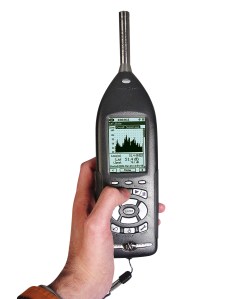
Getting into the small print
The two Construction And Use regulations the Police can use when it comes to your exhaust is Regulation 54 and 57 from the 1986 rules around road vehicles, and while you can find these online, they are basically about excess noise being illegal. Some Police forces claim above 80db is illegal, which frankly is laughable, but this i the kind of thing you need to be aware of. If you want the minimum Police hassle, don’t bait them with some insane sounding or looking exhaust.
Using Essex Police’s own guidelines for example, they say “Initial identification will normally come from hearing a vehicle which has a noticeably loud exhaust above other road noise such as tyres and engines, especially if it is over a prolonged period.” This alone is a fairly good indication, and basically is saying “Don’t take the piss with how loud your exhaust is”.
They go on to say “Before taking any action other than a verbal warning, the exhaust should be tested using the NTI XL2 Audio Analyser. This device must be operated by a trained officer, in line with the manufacturer’s instructions.”
You Can’t Beat An Angry Police Officer
While this sounds promising, as most Police don’t carry this bit of kit, the next section makes it incredibly ambiguous and it’s once again down to their own discretion. “Where no device or the sole reliance on the device is not appropriate, it may still be appropriate to proceed. In these circumstances officers should consider commenting on the following points:
Warnings stamped on the exhaust; ‘Not for road use’, ‘track use only’ or similar;
Observations relating to what could be heard and felt;
Other indications the exhaust or silencer had been altered or replaced and thereby increasing the noise from the original fitted part;
Impact on of the noise on the general surroundings i.e. natural reaction of those passing by.”
So basically, even with no equipment, if they want to decide it’s too loud, it’s too loud. Thankfully it’s only a non-endorsable fine, but still, we’re sure you would still rather not even get a fine, so be aware.
Regardless though, if Police or anyone else tries to tell you an exhaust is illegal just because it exits from the side of the car or anywhere else, they are wrong. But pointing out that being wrong won’t help you if it’s too loud in their opinion anyhow!

